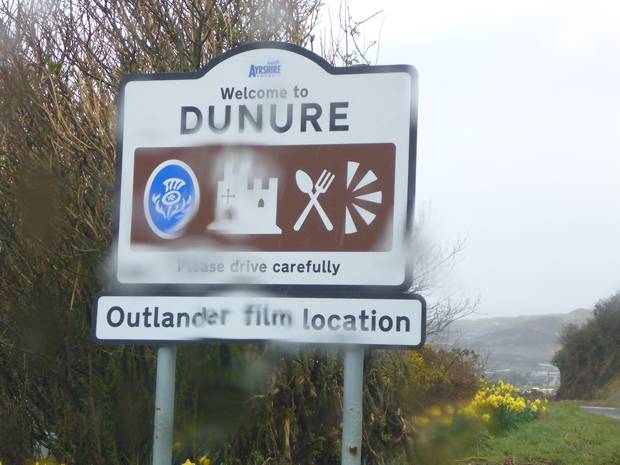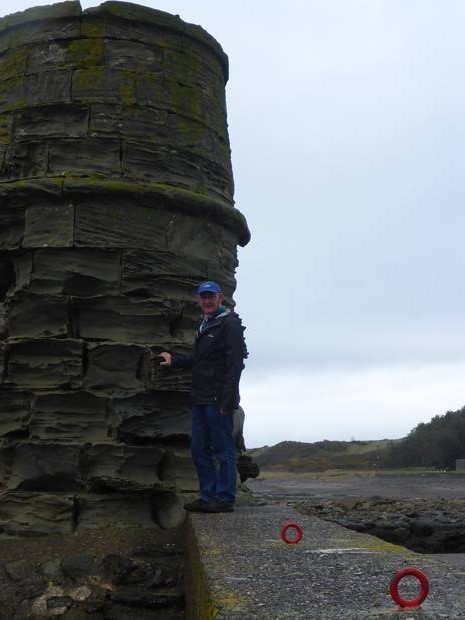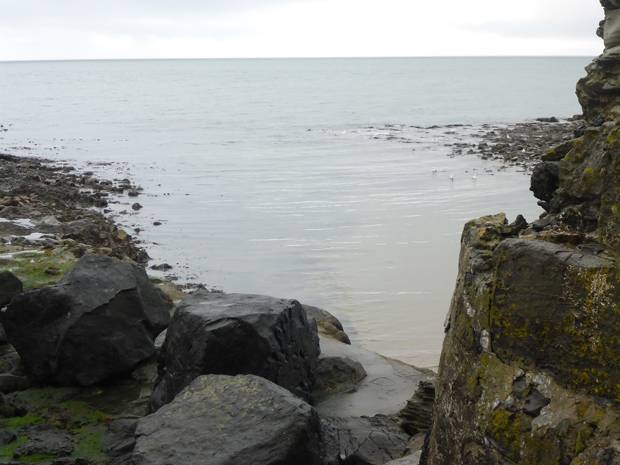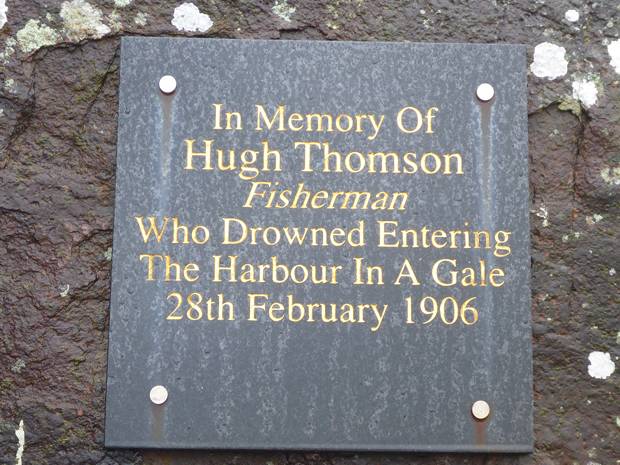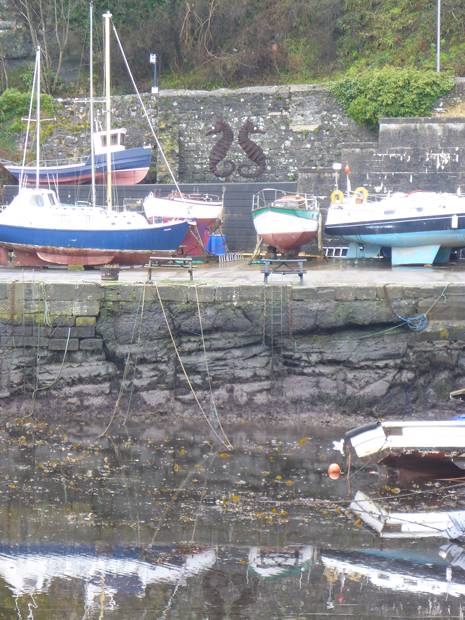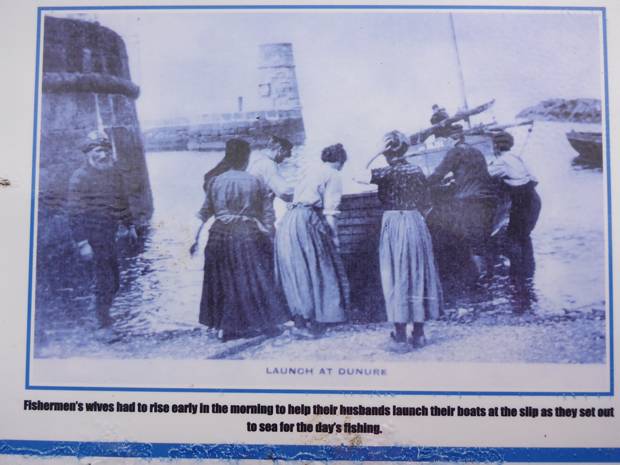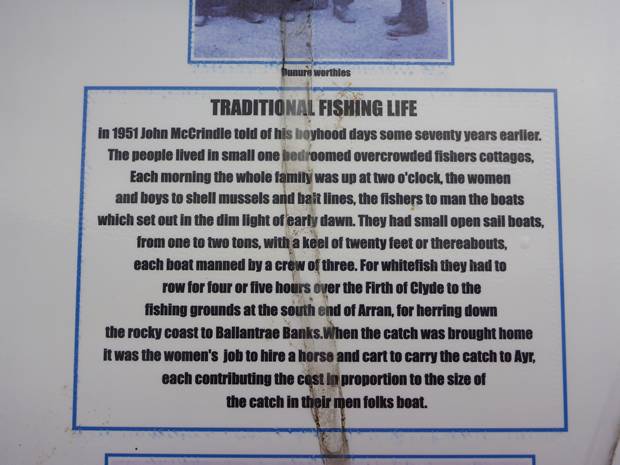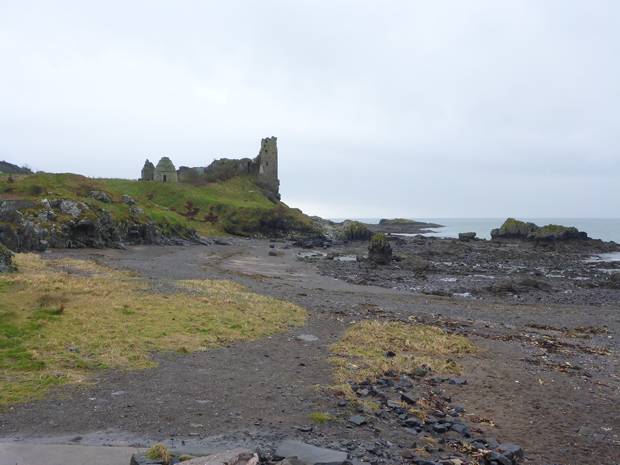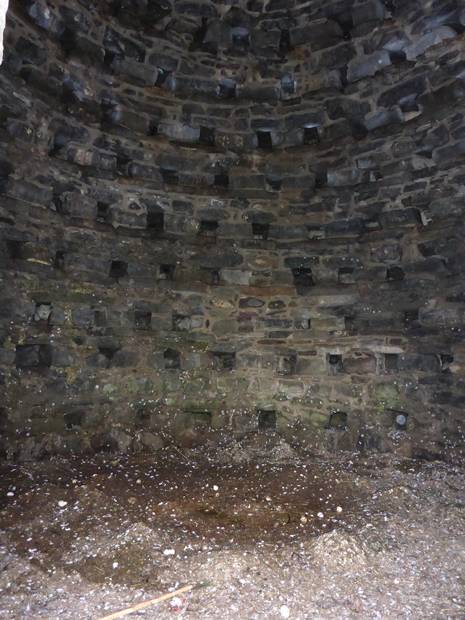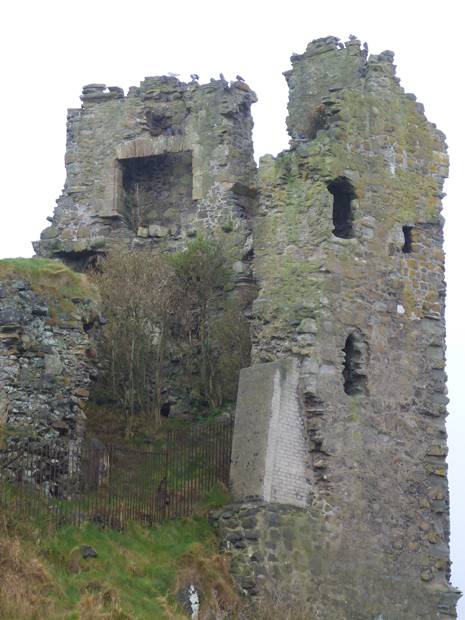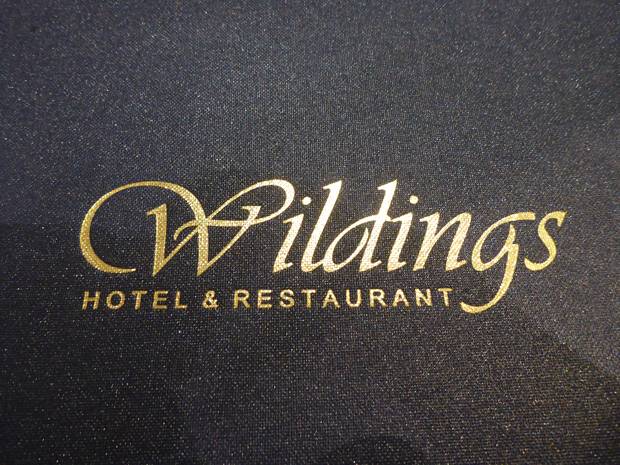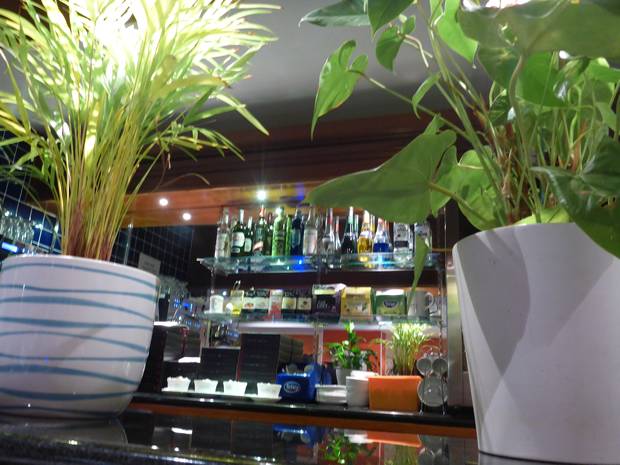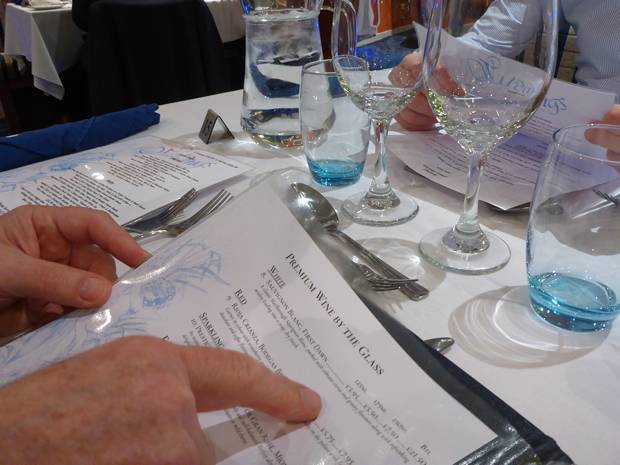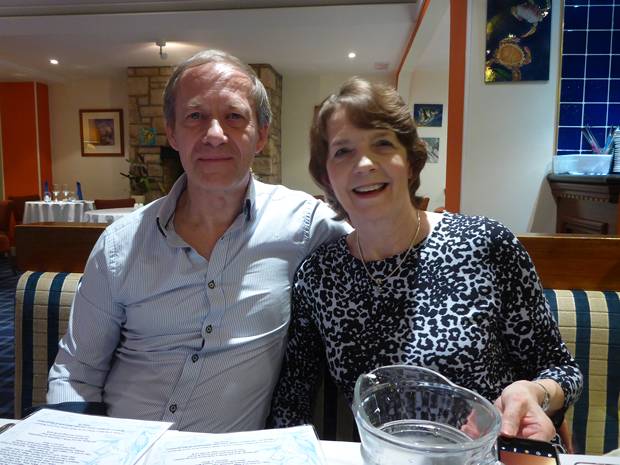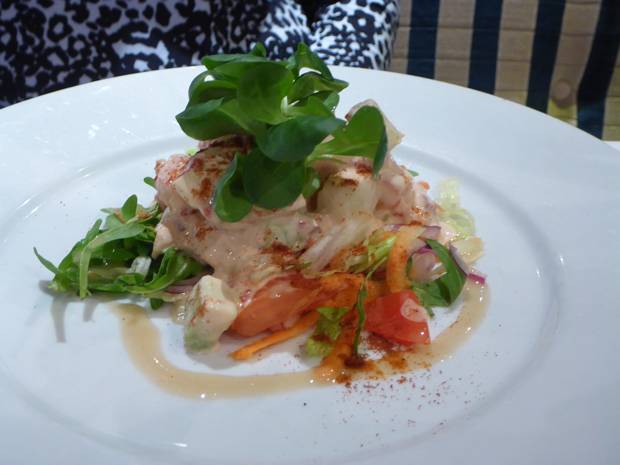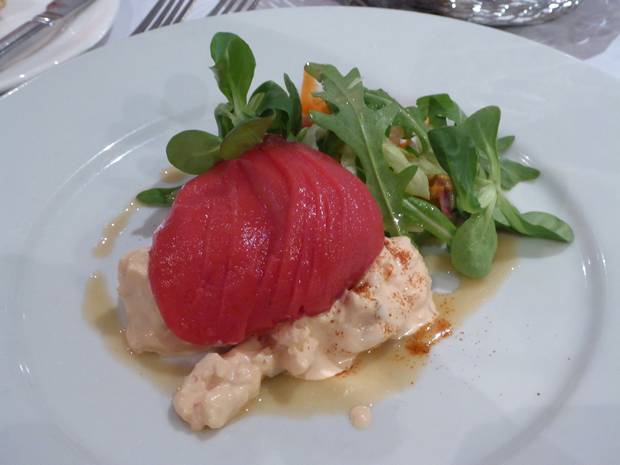Fw: Dunure A Harbour with Many Faces

|
Dunure – A Harbour with Many Faces Dunure Harbour easily fills the requirements of a romantic mind. Named after the yewtree (dun ure), nature started by making a good job of the shallow basin and rocky sided entrance channel which provided man with a sound base for the harbour wall. Even in the worst storms fishermen watched from their cottages as their fragile boats sheltered often intact in the face of the tempest. Both of Scotland’s famous Robbies, Robert the Bruce, the king in waiting climbed up the beach from across the waters and Robbie Burns the bard galloped in on his Meg, to say nothing of Charles Rennie Mackintosh the architect, painter and designer from Glasgow who came by train down the tracks; all knew and loved the place well because Dunure is where man works hand and heart with mother nature to create this rugged haven. In our modern times travellers and film makers also appreciate the perpetual energy of the place, steeped in the rich history of Scotland Dunure now has a permanent place on our viewing screens. You may remember I have before mentioned the story created by Diana Gabaldon in her ‘Outlander’ books about her heroes, Clare and Jamie which are well worth the lengthy read. Well they are now being serialised and in the screen version Dunure appears dressed in various costumes as a Scottish, a French and an American port and I look forward to seeing them myself someday. But for us on this day the skies were grey and the air cool and wet which just added to the atmosphere. On the quay, on white boards there is a long poem written by the local vicar about the bravery of Dunure’s own heroes in rescuing passengers and crew from shipwrecks, with just a handful of unfortunate ones lost and the majority brought safely ashore from the wave battered rocks where just a little further up or down the coast they would all have surely been doomed. The White Walls and Black History of Dunure Castle There is also the sad tale of a young lad, Sir Ewart de Gaire who lived in the castle with his mother and understandably in his sheltered life longed for just one thing, a wife. One night as he walked on the rocks he saw a beautiful mermaid infront of him and of course they fell in love. Together they experienced the underwater heaven that was her home but came back to his mom in the castle to have their child. At the baptism, as soon as the priest, the Abbot of Crossraguel Abbey anointed the child’s head with water both baby and mother exploded in a cloud of blue vapour and disappeared forever. So saddened was Sir Ewart he left the country for good, possibly to Gaire in northern France if there was such a place. He lived during the reign of Alexander III in the 13th century at a time of the Viking invasion from Norway so maybe that scenario leading to the final defeat of the Vikings at the Battle of Largs in 1263 set the seeds for the love story. In the dark light of night could a long blonde haired Viking in his shiny ‘tail’ of armour clamouring over the rocky shore from his longship be the inspiration for the story and the explosion of mother and child a metaphore for the outcome of the battle? With the story writer’s hand gripping reality there was no happy ending there. As indeed there wasn’t for the castle, now a jumble of semi-restored rocks. But picture this. Looking at the photo of the castle from the beach, in your mind’s eye elevate the walls to six stories of accommodation built of hard locally quarried whinstone with softer sandstone for the more intricate parts, add a chapel to the left hand side and numerous roofed buildings within the substantial walls, render the outside of the castle walls with white lime plaster shining brilliant in the sun and making Dunure Castle visible for many miles in its elevated position. Light the numerous fires in their ten foot wide fireplaces and let them send columns of sweet scented woodsmoke upwards and fly colourful banners depicting the Kennedy coat of arms amongst them from tall flagpoles and you have an image of the castle dating back to medieval times. This is how the castles of Britain looked in their heyday. Ironic and tragic isn’t it then that the castle with its violent history crumbles while the 200 pigeon-holed beehive shaped doo cot (dove cot) sheltered the symbol of peace as she laid her eggs for the kitchen and is today one of the best preserved doo cots in Scotland. Peace reigns and the birds are still there! To be honest much of the castle’s disruption came as its perfectly shaped materials were taken and put to new use in the buildings, roads and lime kilns nearby. The rule of the castle by the Kennedy Clan (Helmeted Clan Chief) from the thirteenth to the sixteenth century was at times a cruel one with Gilbert Kennedy the 4th Earl of Cassilis letting religious blood in his zeal for more land in the 16th century being the most marked. A supporter of Queen Mary he entertained her for three days and nights at the castle on her royal tour in 1563 and at the age of 22 he fought in a battle on her behalf in the same year. Two years later and eager to ‘reign’ over yet more Abbey lands (he was known as the King of Cassilis for his feudal mentality) he was almost through successful negotiations with the Abbot to the point of signatures when the abbot sadly died, sadly that is for Gilbert, the Abbot and for Stewart the Commendator of Crossraguel Abbey whom Gilbert promptly imprisoned. Prepare yourselves for something hideous. Gilbert forced Stewart to forge the signatures of everyone in the convent on the deed of sale by roasting him alive twice in the fireplace you can see in the picture until he had completed the task. To cover his tracks Ghastly Gilbert then had Stewart assassinated and as a final act to complete the conquest the assassin himself was disposed of. A decade later he married and his wife had two sons but divine justice was on its way and in the year of his second son’s birth, 1576, he fell from his horse and lived no more. Unsurprisingly a song blossomed out of his notoriety; Twixt Wigtown and the Town of Ayr Portpatrick and the Cruives of Cree No man need think to bide there Unless he court with Kennedy (Cruives -fishtraps on the River Cree) After all that history and culture we were famished so the remaining four of us, Christine, Graham, Rob and I went back to our respective lodges and after a quick brush up drove to the Wildings Restaurant just down the road from Dunure and only half an hour from home. The unassuming exterior of the restaurant and the beautifully decorated and colourful interior were in stark contrast to the rugged, remote and fabulous coastline of Ayrshire just outside the door. (Typing assisted by Ruby Wyatt) |
